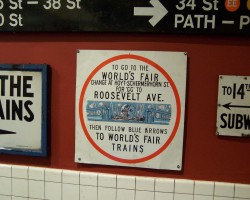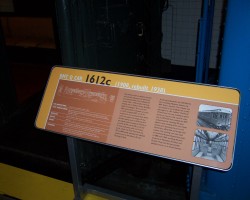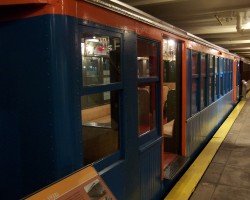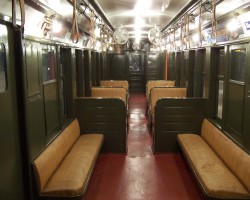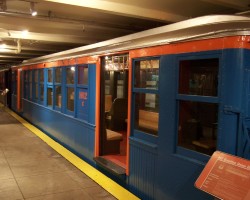World's Fair Trains
The 1939 World's Fair was serviced by all three NYC subway companies. The Interborough Rapid Transit Company (IRT) and Brooklyn-Manhattan Transit Company (BMT) ran express service on the existing elevated IRT Flushing Line (now the #7) to the Willets Point station, which had opened in 1923 and was shared equally by the IRT and BMT.
On the other hand, the NYC Independent Subway System (IND) had no existing service to the fair site and had to build a spur from their Queens Boulevard Line (current E/F/G trains) over a flying junction at the Forest Hills/71st Avenue station, through the Jamaica Yard, and north through through the park where the Van Wyck Expressway currently runs. The World's Fair Railroad station was just to the south of Horace Harding Boulevard (currently the Long Island Expressway I-495). The line only ran during the fair and was completely removed at the close of the fair. Also by the close of the fair in 1940, the city under Mayor LaGuardia had purchased and unified the three separate companies (the IRT and BMT were bankrupt), with the New York City Transit Authority being formed in 1953 and then being being subsumed by the Metropolitan Transportation Authority in 1968.
For the 1964 fair, a suspension monorail was built by AMF to transport patrons around the site. The monorail was demolished along with most other fair structures at the conclusion of the fair.
The New York City Transit Museum's train collection includes BMT "Q" car 1612C, which was used to transport patrons to the 1939 World's Fair and has been repainted to the fair's 1939 blue and orange color scheme:
City officials never considered wooden cars safe for subway tunnel operation and removed them from underground service after a 1918 accident involving wooden cars at Malbone Street, Brooklyn, killed 93 passengers. But more than 2,000 open-platform elevated cars, such as 1612C (originally BRT car 1417), remained in use on elevated lines, which could not support the weight of new all-steel subway cars. In 1938 Car 1417 was rebuilt (and renumbered 1612C) to run with 1612A and 1612B: cars A and C were motorized, while car B was a trailer. Under the Dual Contracts, the IRT and BRT jointly operated new elevated sections such as the Astoria (R) and Flushing (7) lines.
As the city prepared for the 1939 World's Fair in Flushing Meadows, Queens, the BMT faced a quandry. The company was not content to use outdated cars to take passengers to a fair dubbed "The World of Tomorrow," but was unwilling to spend money on new cars that could be used only on IRT-width lines. Instead, the BMT compromised by rebuilding 90 open-platform cars, including 1612C, into closed vehicles and repainting the cars in the World Fair's official blue and orange color scheme. The resulting cars were used on the Myrtle Avenue Elevated line (built in 1888) until 1969, providing 60 years of service in Manhattan, Brooklyn, and Queens. They were the last wooden elevated cars to run in North America.
